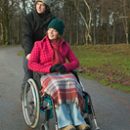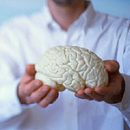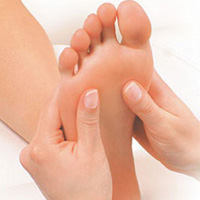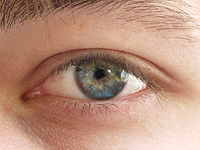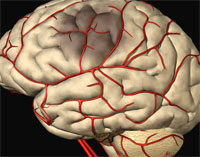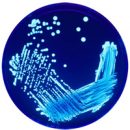You encountered spinal amyotrophy? Deals are more than serious, without the help of doctors here can not do. As a rule, ordinary people who applied for advice to a specialist are difficult to understand the medical language. But the explanation still can be found - this is what this article is written.
Content
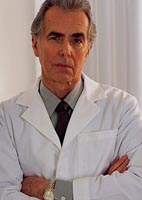 Let's start, perhaps, with the definition of the term. In general, we, doctors, are easy enough to understand each other, as we know Latin. And how to be all the rest, normal people? It remains, unfortunately, ask doctors. However, doctors do not always want to be walking directories and it is understandable - they have a bunch of other work. So let's try to translate medical terms on «human» language.
Let's start, perhaps, with the definition of the term. In general, we, doctors, are easy enough to understand each other, as we know Latin. And how to be all the rest, normal people? It remains, unfortunately, ask doctors. However, doctors do not always want to be walking directories and it is understandable - they have a bunch of other work. So let's try to translate medical terms on «human» language.
So, first, the original definition: spinal amyotrophy - a group of hereditary, more often autosomal-recessive, diseases of the spinal cord motionerons, characterized by muscle weakness, muscle twitching. And now we will translate into Russian:
- Spinal - here, just, everything is clear - it means somewhere in the back (more specifically - in the spinal cord, which is in the spine);
- Amiotrophy - the word consists of three parts - «but» - violation, «MIO» - muscle, «Trofiy» - food. It turns out, spinal amyotrophy - this is a violation of the muscle nutrition caused by somehow (let's say, what) problems in the spinal cord;
- Autosomal-recessive - if briefly is the type of inheritance in which the sign (in this case, the disease) is transmitted through non-treating chromosomes (not through x and y), and it is manifested only if there is both parents (but they can And not to be). Motioneons - large nervous cells in the spinal cord responsible for coordination of movements and maintain muscle tone. Actually, it can be seen from the name: «Moto» - Driving in motion, «neuron» - Name nervous cell.
You noticed that I'm talking about diseases. Yes, there are several types of them:
- The spinal amyotrophy of Verdnig-Hoffman 1 is a very early start (up to 6 months) and, unfortunately, a rapid fatal outcome - by 2-5 years;
- The spinal amyotrophy of Verdnig-Hoffman 2 - the beginning in early childhood (somewhere around a year and a half), the course of medium gravity, the average life expectancy with such a type of disease - 10-30 years;
- The spinal amyotrophy of Cultrodberg-Vanderder - begins in adolescents, a favorable forecast - the life of patients over 40 years;
- Kennedy's spinal amyotrophy - manifests itself in adults in combination with an increase in the mammary glands. This type of h-chromosome (that is, it is inherited to girls - from mother or father, boys - from mother).
Symptoms of spinal amyotrophy
- The main symptom of the disease is gradually increasing weakness and muscle atrophy. The process begins with the body and proximal (close to the body, for example, the shoulders and hips) of the fines departments, spreading then symmetrically to the rest of the muscle groups. Especially often the disease affects the long muscles of the back.
- Reduced muscle tone - often muscle atrophy disguised well (or excessively) developed subcutaneous fatty tissue. However, if you make electromyography (this is the same as electrocardiography, only for skeletal muscles), then we will see that the nature of the muscles lesion is connected with the nerves (neurogenic).
- Frequently observed muscle twitching and there are no tendon reflexes (since the path of the pulse in the spinal cord is disturbed).
- Also characteristic symptoms for spinal amyotrophy - kifoscoliosis (curvature of the spine of the Welcome and the Force), muscle contractures (a persistent restriction of muscle mobility, it cannot shrink and relax) and respiratory disorders due to the lesion of intercostal muscles.
- A very characteristic symptom of spinal amyotrophy - thinning of long bones (femoral, shoulder and t.D.) detected on radiograph.
Differential diagnosis of spinal amiotrophy
The spinal amyotrophy needed to distinguish from the following diseases:
- Acute poliomyelitis - for him is characterized by a sharp start with fever, paralysis is not symmetric and there is no progression of the process.
- Myopathy is also a progressive muscle disease, but it is connected with impaired metabolism in muscle tissue. In myopathies there are no muscle twitching, not such a rapid flow and other electromyographic picture.
- Congenital mythonia (violation of the tone of muscles) - here from her spinal myotrophy to distinguish not so simple. The main feature of congenital mythonies is common and strongly pronounced hypotension (reduction of tone) muscles. Mianthai differs from spinal amyotrophy benign flow and absence of muscle twitching. Discuss these two diseases from each other helps biopsy (taking a tissue sample) muscles.
We, in physicians, there are two types of treatment - symptomatic and pathogenetic. The first is allocated only to the relief of symptoms and does not treat the disease itself (although indirectly, due to improving the physical and mental state - can help in the treatment of illness), for example, tea with raspberry with influenza or cold. The second is directed precisely on the treatment of the disease itself, and the symptoms (pain and t.D.) may disappear and not immediately.
So, unfortunately, the pathogenetic treatment of spinal amyotrophy is not yet existed. Treatment only symptomatic - good nutrition, regular medical physical education and early conduct of events that prevent the appearance of contractures in the muscles.

